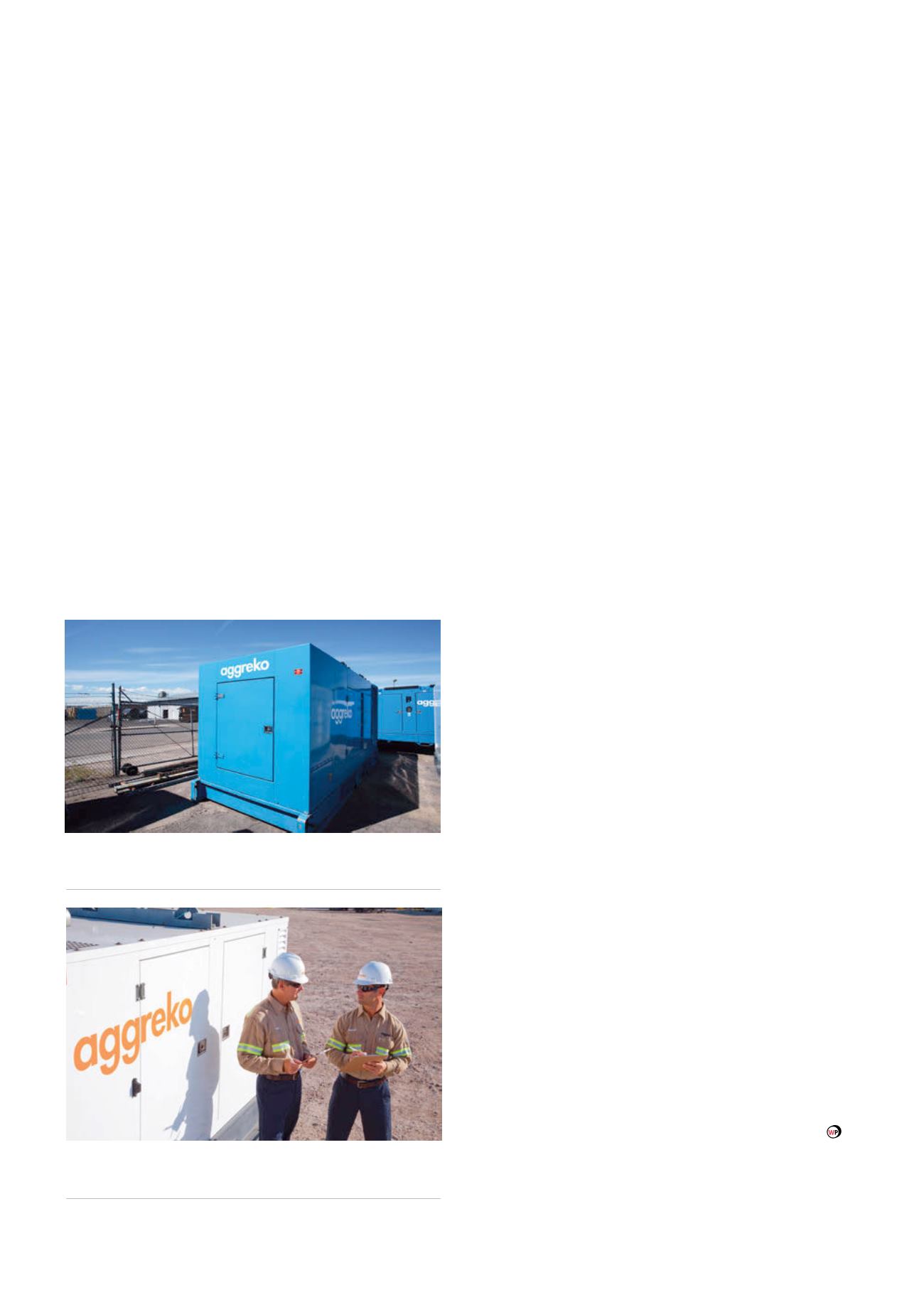
Powering pipeline compressors
Getting power to pipeline projects is no mean feat. Frequently
in remote and challenging locations, being able to power an air
compressor consistently, on location and with reduced carbon
emissions is vital. A power generation system that can be reliable,
flexible, environmentally friendly and able to withstand a harsh
physical environment is therefore the main priority for pipeline
constructors and their contractors.
For years, pipeline companies have had to weigh up the pros
and cons of how to fuel their air compression, with diesel fired
power or compression and electricity through utility power driving
electrical (motor) compression being effectively the only two
options. Compromise is the one thing you want to avoid when
trying to deliver optimal returns for a pipeline and yet that is
exactly what this choice can sometimes feel like. With the high
cost of diesel, diesel fired compressors may or may not be the
most expensive option to operate even with the relative fuel cost
per million BTU and, while they do not require electrical power
on site, they produce a greater amount of emissions compared to
those driven by electricity. However, relying on a grid connection in
remote or underserved locales can put your compression capability
at risk of down time thanks to power outages or capacity issues.
Thus, there is a balancing act to strike even before construction
begins and air compressors are installed.
Aggreko’s solution to that particular problem has been to
develop a system that applies the best of both scenarios. By
harnessing the unique benefits of its business – total flexibility
through reliable natural gas fired power generation; working in
remote locations with compression systems coupled with mobile
power generation, designed to withstand the most extreme
environments – Aggreko has been able to keep emissions low and
offer security of power supply.
Aggreko’s natural gas-powered generators represent the first
part of that equation: they are used to bypass the utility and
feed power to electrical compressors, whose lack of emissions
and ‘no ignitions’ guarantee make them the preferred choice for
pipeline businesses. The combination has many benefits, one being
the complete system is compliant with all relevant standards
(natural gas fired generation meets and exceeds all EPA and State
requirements in the US) and the environmental wins do not come at
too great a cost to the bottom line.
There is certainly a trend emerging towards a preference
for natural gas power generation out in the field. In Aggreko’s
experience, however, customers do not only choose natural gas
generators because they are cost-effective and reduce carbon
emissions. Natural gas fired generators do not have the risk of a
liquid fuel spill and the company is finding that its recent advances
in spill containment means its generators actually prevent spillage
of engine fluids altogether, meaning stand-alone generators like
Aggreko’s provide environmental guarantees well beyond carbon
impact.
Managing the ebb and flow of pipeline construction also
requires flexibility in a project’s power needs. That is why
the modular unit configuration of Aggreko’s generators and
compressors is so popular – it allows for the scalability of installed
capacity and guarantees power delivery to a pipeline project for
as long as is needed, with only minimal special site preparation
required. As pipeline construction is completed in sections ranging
from a mile to 30 miles in length, rapid deployment of power as
well as flexibility on where to install power and compressor units
often makes rental power generation the preferred route for
pipeline construction.
Oil-free air compression
Aggreko has found the oil-free air in its compressors particularly
advantageous: the compressors are capable of delivering 100% oil-
free air at pressures up to 150 psi and flowrates between 400 and
1500 ft
3
/min, using electric motors as the source of compression.
For higher pressures, you can combine compression with
electric-drive, high pressure boosting enabling you to reach
pressures as high as 600 psi and a flowrate of 1250 ft
3
/min.
Maintenance
Oil-free air comes into its own when maintenance is a concern.
When pipeline systems develop leaks and relining is needed, a clean
and consistent flow of compressed air is vital while the lining is
applied. Knowing its compressed air is 100% oil-free means Aggreko
can incorporate desiccant dryers into a compression system to
ensure there would be no moisture-related contamination issues
in a pipeline. The company’s desiccant-based rental air dryers have
capacities up to 5400 ft
3
/min with dew points as low as -100 °F and
their “afterfilters” clean outlet air down to 0.01 micron. This should
ensure the fastest possible return to service for any pipeline.
References
1.
Manhattan Institute for Policy Research.
2.
US Energy Information Administration.
Figure 2.
Aggreko compressors are capable of delivering 100%
oil-free air at pressures up to 150 psi and flowrates between
400 and 1500 ft
3
/min
Figure 3.
Aggreko’s mobile power generators coupled with
compression systems, are designed to withstand the most
extreme environments and remote locations.
84
World Pipelines
/
SEPTEMBER 2014


